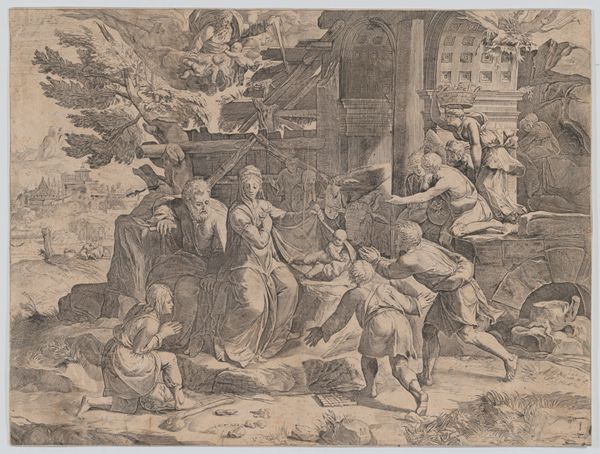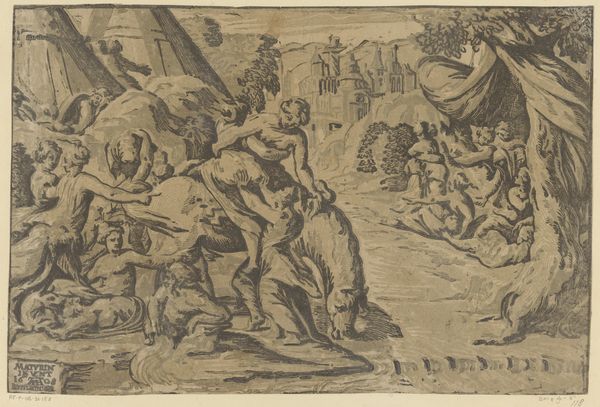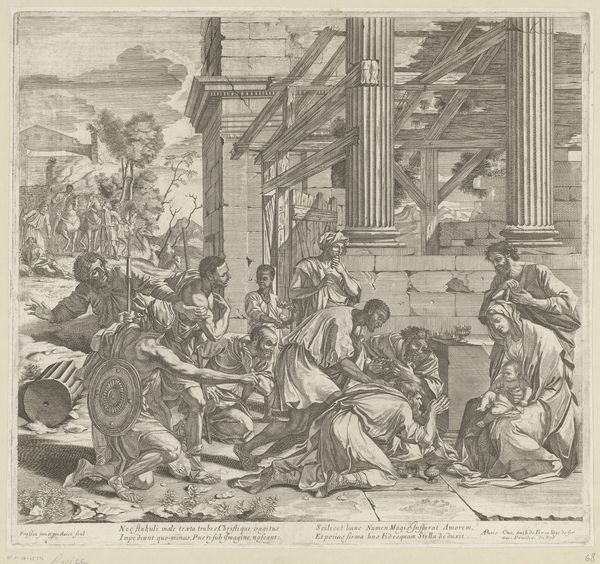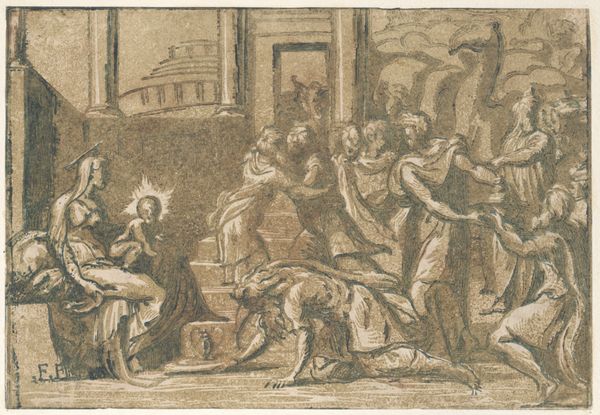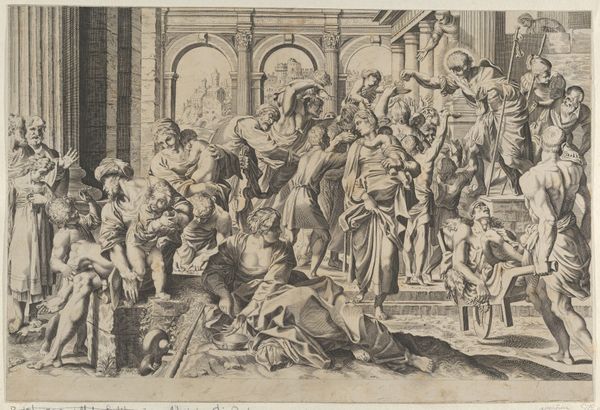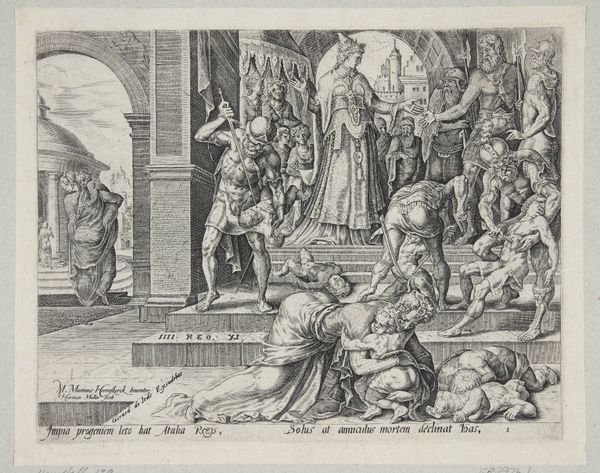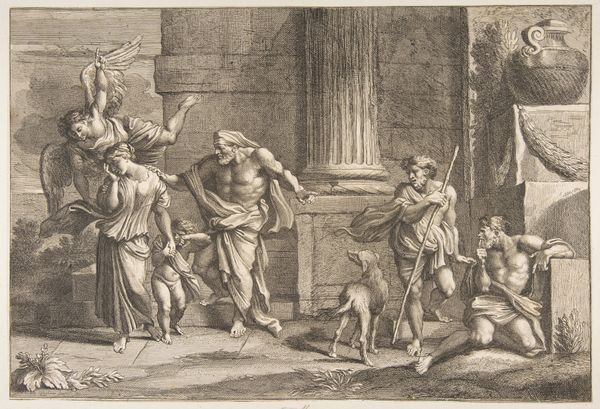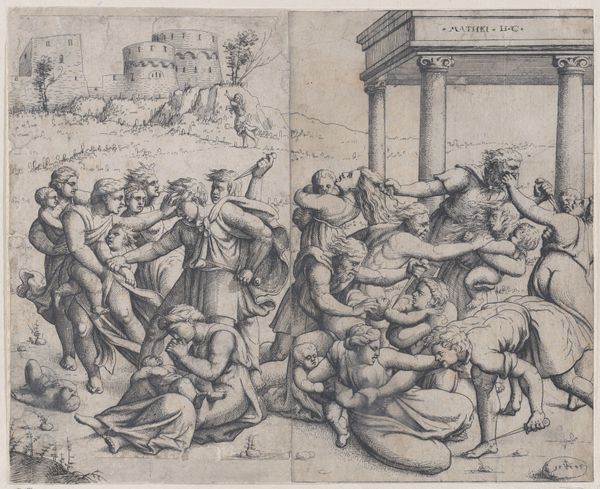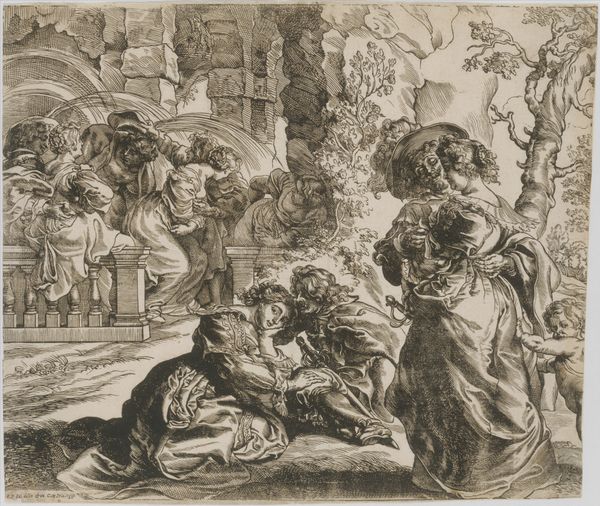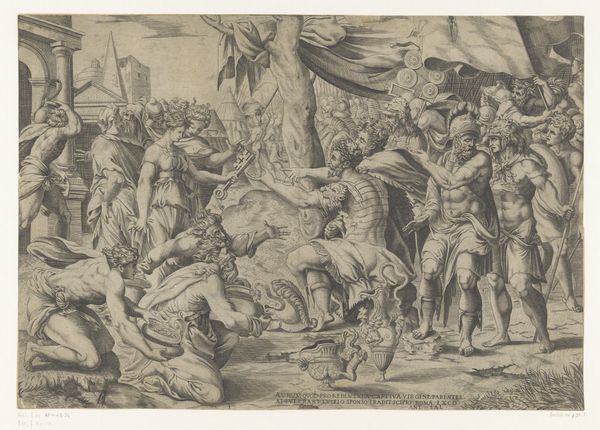
drawing, print, engraving
#
drawing
# print
#
landscape
#
figuration
#
history-painting
#
italian-renaissance
#
engraving
Copyright: Public Domain
Curator: Cornelis Cort engraved "The Adoration of the Shepherds" after a design by Taddeo Zuccaro around 1569. It is currently held in the collection of the Metropolitan Museum of Art. Editor: What strikes me first is the incredible energy. It's a holy moment, right? But there's such raw emotion pouring from the shepherds; look at them scrambling forward. The composition is dynamic! Curator: Precisely, that energy results from Cort’s sophisticated use of line, translating Zuccaro’s design into an engraving that captures the movement and texture in the figures. It's not just a religious scene but a display of expert printmaking. Consider the process of creating such a detailed image. The labor involved speaks to a cultural emphasis on skilled artisanship and the distribution of such imagery for the masses. Editor: You are right, one forgets this was mass culture, as opposed to high culture. For me, it evokes feelings of awe but also accessibility. Look at the faces, worn, excited. The artist isn't presenting some ideal. Curator: Certainly. And it is important to consider how printmaking allowed these scenes, carrying profound theological weight, to circulate among broader audiences. Religious narratives became democratized. The commercial aspect of the process played an essential role in shaping religious identity during that period. Editor: Looking closely, I can see a real understanding of landscape painting principles applied within this holy scene. Like a memory playing out. The buildings, figures and landscape all work together beautifully to draw one’s eye to the focal point of the piece – Mary, Joseph and Jesus, and the adoration of the baby Jesus. It really lends itself to this theme of this pivotal religious narrative taking place in the real, raw world. Curator: The material analysis adds depth. The type of paper, the ink used, these can be markers for dating and contextualizing the work, unveiling its journey through time. Editor: For me, losing myself in this work means seeing something new with each encounter, that humanity meeting the divine – in landscape that lives! Curator: Exactly, that human interaction shapes art history just as powerfully as a master engraver manipulates their burin to impress images for centuries.
Comments
No comments
Be the first to comment and join the conversation on the ultimate creative platform.
